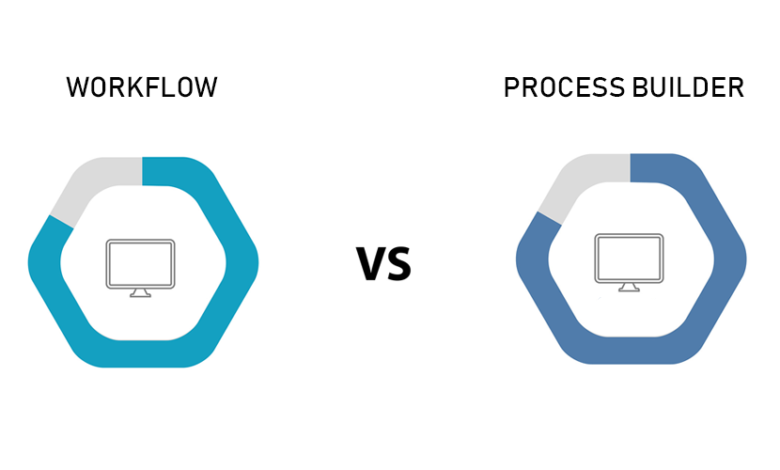Optimizing Document Review in Legal Operations: Workflow vs. Process Builder

Efficient document review is crucial. Legal teams are inundated with contracts, compliance documents, and case files that demand meticulous review. The traditional methods are labor-intensive and can lead to errors that impact legal outcomes. For many, the real question becomes not whether to optimize their document review process but how to do so effectively. Should they use a workflow tool or a process builder? Understanding the differences between these two approaches and selecting the right one can transform legal operations.
This post explores how to optimize the technical document review process, focusing on the benefits and limitations of using workflow tools and process builders, along with tips to choose the best solution.
The Challenge of Streamlining Document Review
Legal teams often struggle with the sheer volume of technical documents needing review, including contracts, compliance files, and legal research materials. Traditional review methods are not only time-consuming but are also prone to human error. Legal teams are caught in a cycle of lengthy reviews, fragmented communication, and repetitive manual tasks. This burden impacts productivity and jeopardizes timely decision-making.
Inefficient document review processes can lead to:
- Missed deadlines and delayed responses.
- Increased operational costs and lower team productivity.
- Risk of legal and regulatory compliance issues.
Despite various solutions available, legal teams must weigh the choice between workflow vs. process builders. Understanding this choice can clarify the best path forward to enhance document accuracy, reduce turnaround times, and improve compliance.
Understanding Workflow Tools and Process Builders
Both workflow tools and process builders aim to improve efficiency, yet each offers unique advantages depending on the complexity and structure of your document review needs. Let’s break down each option:
1. Workflow Tools: A Streamlined Approach
Workflow tools provide predefined templates to manage routine document review tasks with minimal setup. They emphasize simplicity and speed, enabling legal teams to build a structured document review process without extensive customization. Workflows guide the document review process in a linear, step-by-step fashion, making it easy to assign tasks, track progress, and get real-time updates.
Benefits of Workflow Tools
- Easy Setup: Workflow tools come with pre-built templates, requiring minimal time to deploy. For teams that need rapid optimization, this can be invaluable.
- Automated Tasks: Many workflows automate task assignments, notifications, and reminders, ensuring timely document processing.
- User-friendly: Workflow tools have intuitive interfaces that are simple for teams without technical expertise to use, making it easy to manage the document review process.
Limitations of Workflow Tools
- Limited Flexibility: Workflow tools operate within set parameters, limiting customization for complex document review needs.
- Rigidity in Complex Reviews: For layered, non-linear document reviews, workflows may lack the flexibility to account for unique approval hierarchies or sequential variations.
Workflow tools are ideal for organizations with straightforward document review requirements, where speed, consistency, and standardization are priorities.
2. Process Builders: Customization for Complex Reviews
Process builders, on the other hand, offer a flexible solution that empowers teams to create highly tailored document review processes. Unlike workflow tools, process builders allow users to define and refine each step in the review process, incorporating unique logic, dependencies, and multi-stage approvals. Process builders are better suited for legal teams with complex or high-stakes review needs, as they provide control over every stage in the process.
Benefits of Process Builders
- Customization and Flexibility: Process builders allow legal teams to customize every stage of the document review process to align with specific requirements.
- Scalable and Adaptive: They are highly adaptable, making it easy to update processes to handle new document types or compliance rules.
- Advanced Logic: Process builders can incorporate advanced conditional logic, making them more suitable for complex reviews requiring varied approvers, sequences, or protocols.
Limitations of Process Builders
- Longer Setup Time: The customization capabilities of process builders often demand a longer setup time and dedicated resources.
- Higher Learning Curve: Due to their complexity, process builders may require training, particularly for users who are new to process design.
Process builders are ideal for legal teams handling high-complexity document reviews that demand custom sequences, conditional steps, or a dynamic approach.
Choosing Between Workflow Tools and Process Builders
The document review process is foundational to effective legal operations, and the choice between a workflow and process builder ultimately depends on the complexity, flexibility, and specific needs of the legal team. Here are the core factors to consider:
1. Volume and Complexity of Documents
- Workflows excel when the volume of documents is high but the complexity is low, offering straightforward automation to manage numerous files quickly.
- Process Builders shine in environments with high document complexity, where tailored steps or approval hierarchies are essential.
2. Team Capacity and Skill Level
- Workflow tools require minimal training, making them suitable for legal teams with limited technical resources.
- Process Builders necessitate an investment in training but offer more extensive functionality for technically proficient teams.
3. Budget and Resource Availability
- Workflows are generally cost-effective, with faster implementation.
- Process Builders may have higher upfront costs due to their advanced capabilities but can lead to significant long-term savings by optimizing complex review processes.
4. Integration Needs
- Workflow tools often come with basic integrations, which may be sufficient for teams relying on standard tools.
- Process builders offer in-depth integrations with other legal tech software, enabling more seamless data flow for teams with sophisticated tech ecosystems.
How to Implement the Right Document Review Solution
To make the most of document review in legal operations, the right solution must be implemented thoughtfully. Here are practical steps to guide your choice:
Step 1: Assess Your Review Needs
Conduct an assessment of your document review process. Evaluate the volume, complexity, and types of documents handled daily. High-volume yet low-complexity reviews may benefit from a workflow approach, while high-stakes, multi-layered reviews are better suited for a process builder.
Step 2: Map Out Key Workflow Components
Identify critical steps in your review process, such as assigning reviewers, setting deadlines, and approval stages. Understanding these elements will help you determine whether a workflow or process builder offers the best support.
Step 3: Evaluate Software Options
Investigate software platforms that offer either a workflow tool or process builder for document review. Prioritize software that integrates well with your existing legal tech stack, enhances productivity, and ensures data security.
Step 4: Train Your Team
Whichever option you choose, training your team is essential. Ensure they are familiar with the selected tool’s features and comfortable with using it for document reviews. This will streamline adoption and help teams maximize the tool’s capabilities.
Step 5: Continuously Monitor and Optimize
Regularly review performance metrics, such as turnaround times and error rates. For teams using a process builder, periodically update processes to reflect changes in document types or legal requirements.
Maximizing Legal Efficiency with the Right Document Review Tool
The decision between workflow and process builder tools depends on your team’s unique document review needs, budget, and available resources. Both offer valuable features, with workflows providing a streamlined approach to document review and process builders delivering advanced customization for complex requirements.
Implementing the right document review process, whether through a workflow tool or process builder, will streamline operations, reduce errors, and foster improved compliance. In a world where legal accuracy and efficiency are paramount, an optimized document review process becomes a competitive advantage, freeing legal professionals to focus on strategic work that adds real value.






